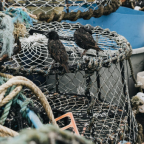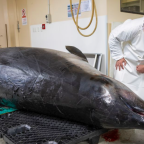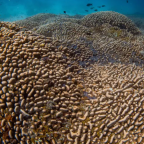
The number of fish in protected zones on the Great Barrier Reef has increased by more than half only two years after the zones were declared.
Surveys of inshore and offshore reefs showed numbers of popular angling species such as coral trout and stripey sea perch were up 50 to 55 per cent.
The surprisingly quick recovery from fishing showed the no-take “green” zones were a runaway success, James Cook University professor Garry Russ said.
He said more studies would start soon into whether the extra fish were spilling into nearby unprotected areas, benefiting anglers.
Green zones were introduced in July 2004 and now cover a third of the Great Barrier Reef.
“I was surprised by how quickly this has happened. I expected it would take a bit longer,” Professor Russ said.
“There are a few ideas about the cause. The most likely one is the fishing mortality has dropped, but it is also possible bigger fish are coming up from the deep now there is less disturbance or we could coincidentally have had a very good recruitment year for young fish in 2004.”
The JCU surveyed fish and coral populations on fringing reefs of the Whitsunday Islands.
Researchers from the Australian Institute of Marine Science, meanwhile, surveyed 26 offshore reefs between Cairns and Gladstone which were closed to fishing and 25 where fishing was still allowed.
AIMS research director Peter Doherty said he was excited to see such clear results so soon.
“The extent of the difference is quite surprising at this early stage, but the consistency of the differences between zones in all of the places that were examined last year leaves me in no doubt that this is a real result,” Dr Doherty said.
Great Barrier Reef Marine Park Authority chairwoman Virginia Chadwick said the results were very encouraging.
“This is positive news for both the tourism and fishing industries,” she said.
“This monitoring has shown the importance of green zones and why they are vital to the future of the Reef.”
Source: news.com.au










Social Profiles